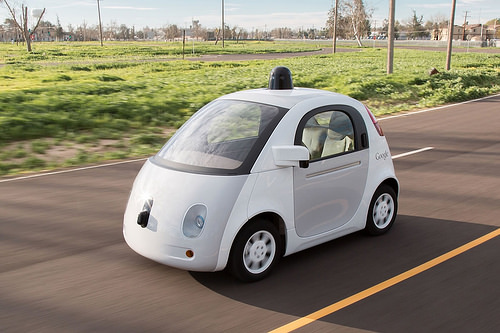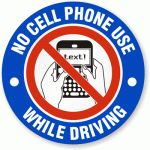Motion sickness a stumbling block for autonomous vehicles
Self-driving cars are set to reduce traffic congestion, spur environmental improvements, and lower mobility costs for (former) drivers. As recent study “Self-driving Carsickness” shows, autonomous vehicles may also be linked with an uptick in carsickness — and fully autonomous vehicles may cause symptoms profound enough to limit the impact of these otherwise life-changing vehicles. But there is hope: The study also addresses how the design of these cars and a change in perception among passengers may exert the greatest influence of all.

Because of how we process visual information, riders in self-driving vehicles may be afflicted with severe nausea. Image from Marc van der Chijs.
As the study authors write,”…Self-driving cars [have moved] from science fiction into reality… Google’s self-driving car famously has been clocking up thousands of accident-free miles and several countries are now preparing themselves to adopt laws permitting self-driving cars on public roads.” Autonomous driving should remove or at least reduce human error from the driving equation.
Certain scenarios can emerge in a self driving vehicle which might not appear in a regular vehicle. For example, taking away control of the car renders individuals more susceptible to motion sickness, due to the passengers’ “inability to predict future motion.” Another cause for motion sickness is being engaged in nondriving tasks, as most people who have tried to read a book, do needlepoint, or otherwise pass the time while riding in a vehicle as a passenger, can attest! Aside from better understanding motion sickness — the researchers investigate how motion sickness impacts passengers of different ages and gender as well as how motion sickness impact performance — changing the design of self driving cars can also significantly influence the tendency towards motion sickness.
One design consideration is “anticipation of motion trajectory.” In other words, helping passengers understand where they’re headed next, or, as the researchers write, “forward and sideways visibility should be maximized to provide occupants of the clear view of the road ahead.” Another design consideration is “design for non-driving tasks.” For example, designing a display of the right size and location can help passengers to better understand where they are, and, in doing so, prevent or reduce the likelihood of sickness. One potential solution is to integrate the display within the vehicle’s interior, such as in the floor or in the door cards. Augmented reality, where displays are superimposed on the view of the road ahead, are also a potential solution. The goal is to orient the passenger and to let her know where she is going. (Future research into the importance of peripheral vision and its impact on motion sickness will also likely determine new solutions.)
The study isn’t the only investigation into motion sickness and autonomous vehicles. A report from the University of Michigan’s Transportation Research Institute earlier this year identified certain activities, such as playing games, working, and talking on the phone that are related to motion sickness. As Forbes reported, this study suggested that three factors trigger motion sickness: the conflict between balance and visual inputs, the inability to anticipate the direction of motion, and the passengers’ lack of control. That report suggests that between six and 10 percent of those riding in self driving vehicles would be expected to “always” or “usually” suffer some amount of motion sickness.
Yet, as these recent researchers discovered, one of the best ways to mitigate this is to reframe the way we look at self-driving cars. As they write, the success of self-driving cars may boil down to a new perspective among passengers: “in short, self-driving cars cannot be thought of as living rooms, office spaces, or entertainment venues on wheels and require careful consideration of the impact of a moving environment.”
Related Posts
Category: Transportation

















